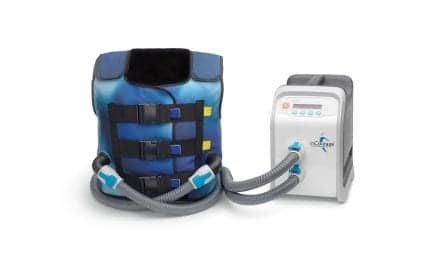Following proper inhaler technique can make the difference between patients achieving a clear airway and continuing to struggle for breath.
Patients who have asthma, chronic obstructive pulmonary disease (COPD) or some other type of respiratory condition often rely on the relief they derive from an inhaler. But following proper technique and adhering to clinician instructions could make the difference between achieving a clear airway and continuing to struggle for breath.
Patients today have a variety of inhalers from which to choose. Rhonda Vosmus, RRT, NPS, AE-C, nationally certified asthma-COPD resource educator at InterMed PA in Portland, Maine, noted that there are some 34 different brands on the market.
Quick relief inhalers, also known as metered dose inhalers (MDIs), provide an aerosol that the patient takes in slowly with deep, holding breaths. “If you breathe in too fast, the medication goes to the back of your throat and will be systemically absorbed. It may take longer to work and has potentially greater side effects when you do it that way,” Vosmus said, noting that the medication is a beta agonist and can make a patient shaky when it gets into the bloodstream.
Dry powder inhalers have dense particles and should be inhaled quickly and held briefly. “If you take the medication in slowly, it will stick to your mouth and tongue,” said Vosmus. After taking any inhaled steroid, the patient should rinse his mouth and spit; otherwise, there is a risk of developing candida.
Vosmus pointed out that aerosol inhalers have to be primed four times before the medication comes through. If the inhaler is not used for two weeks, it should be reprimed. “The mist drives the inhalant out. When the device is empty, you will still see at least 50 sprays, but it’s only mist, not the drug.” She added that most inhalers on the market today have dose counters.
Some studies, which have been conducted by the manufacturers, suggest that spacing chambers augment the penetration and deposition of medication and help the patient get better control of breathing. But Vosmus pointed out that, although they might be useful for young patients and the elderly, there are some cautions to consider. Plastic spacers cause static electricity. “Aerosol has a negative charge and a plastic spacer has a positive charge so the drug will stick to the spacer,” she noted.
Newer spacers are made of a rubber polymer, which is non-static and more suitable for aerosol delivery; however, the high cost might be a barrier. “It’s considered durable medical equipment and doesn’t follow typical copay rules,” Vosmus indicated.
Regardless of which type of device a provider prescribes, proper use of the inhaler is key to good outcomes. Vosmus reported that in one study, 47% of primary care providers who prescribed inhalers to their patients did not know proper technique for medication delivery.
When instructing a patient—whether pediatric, adult or geriatric—Vosmus first demonstrates how to use the inhaler and then asks the patient to do the same. “Then I ask the patient to teach me,” she said. “We assume that an adult patient can use it by reading the package insert. But the writing is small and some people don’t read the instructions.”
Depending on age and any physical or mental barriers, patients can usually learn proper technique in one session. However, when the type of inhaler changes, patients should undergo another review to ensure proper usage.
Vosmus pointed out that presenting a written treatment plan that includes illustrations and details on how to recognize the need for the inhaler, what to do when breathing becomes labored, how many times to use the device and what steps should be taken before calling a doctor or some other medical professional may facilitate better understanding and optimize results. RT
Phyllis Hanlon is a contributing writer to RT. For further information, contact [email protected].











I didn’t realize that it is so important to take slow, deep breaths when using an inhaler. It is so interesting how the different types of inhalation aerosols require different maintenance. When I need an inhaler, I will be sure to look up the proper method for that specific type.